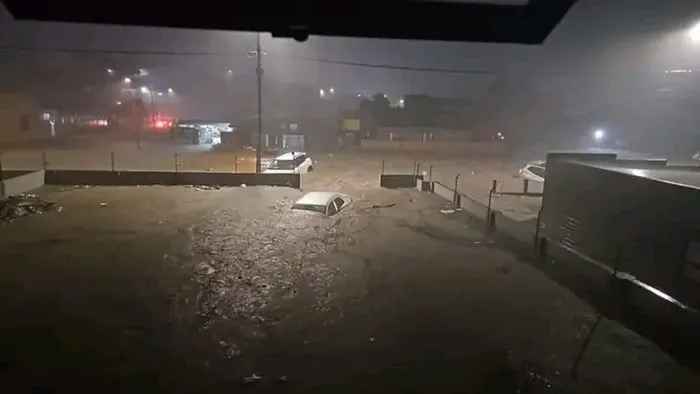A painful winter for many as Eastern Cape flood death toll rises to 88
NATURAL DISASTER

A school minibus carrying 13 learners was recovered after being swept away by raging floodwaters in Dikolini, Eastern Cape, where ongoing rescue operations are searching for at least 10 people still missing following the collapse of a bridge.
Image: File
South Africa is reeling from the devastating impact of widespread flooding that has left at least 88 people dead in the Eastern Cape, including a two-year-old child, as communities struggle to come to terms with the destruction caused by last week’s torrential rains.
A powerful cut-off low weather system swept through large parts of the country, bringing days of relentless rainfall that triggered landslides, road collapses, and the destruction of homes, with the Eastern Cape bearing the brunt of the disaster.
Rescue teams, supported by police, SANDF personnel, and volunteers, continue to search for the missing. Temporary shelters have been erected to house displaced families, some of whom lost everything in a matter of hours. The emotional toll has been immense.
“We are sleeping in a hall with no mattresses, just blankets,” said Nosipho, a mother of three who was forced to flee her home in Port St Johns.
“The water just came. It took everything, our clothes, our food, my child’s schoolbooks.”
Among the dead is a two-year-old child, whose body was recovered by rescue workers in one of the hardest-hit areas. The child’s family, like many others, had no time to escape as floodwaters surged through their informal settlement.
President Cyril Ramaphosa visited the province on Friday to assess the damage and offer condolences.
Speaking to survivors in affected communities, the president described the scenes as “heartbreaking” and promised immediate support and long-term rebuilding efforts. “This is a national tragedy,” he said.
“We cannot ignore the increasing frequency and intensity of such disasters. Climate change is real, and it is hurting the most vulnerable among us.”
Relief efforts are now in full swing. Government departments, municipalities, and non-governmental organisations are coordinating aid efforts, delivering food parcels, clean drinking water, clothes, and hygiene packs.
Humanitarian organisation Gift of the Givers is among those on the ground, distributing essentials and providing trauma counselling. “The scale of this disaster is enormous,” said founder Dr Imtiaz Sooliman.
“We are focusing on immediate relief, but long-term recovery will require months of rebuilding and sustained support.” Hundreds of families have been displaced across towns, including Port St Johns, Lusikisiki, and Flagstaff.
Many roads remain inaccessible, and several schools and clinics have been damaged or destroyed. The South African Weather Service has warned of ongoing risks, with the region still vulnerable to further rainfall.
The government has declared a local state of disaster in several municipalities and has pledged funding for emergency response and infrastructure repair. Yet, for many, frustration remains over poor drainage systems, inadequate housing, and a lack of early warning measures.
“This flood didn’t just take lives — it exposed how fragile our communities are,” said community leader Thabo Mdingi.
“We need more than promises. We need a real plan.”As winter deepens and the death toll continues to rise, South Africans are left grappling with loss, displacement, and a growing sense of urgency about the human cost of extreme weather.